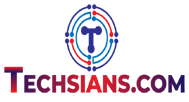In recent years, the timeless activity of coloring has transformed remarkably, migrating from the tactile world of paper and crayons to digital technology’s dynamic and interactive realm.
“Blending Pixels with Paper: The Rise of Digital Coloring Books” delves into this evolution, exploring how digital coloring books redefine artistic expression for the next generation.
While traditional coloring methods hold their charm and benefits, digital coloring books offer a new array of advantages and experiences, making them a valuable addition to the world of educational and recreational activities for children.
The Digital Coloring Revolution
The advent of digital coloring books marks a significant shift in how children interact with art and creativity. These digital platforms merge the simplicity of traditional coloring with the limitless possibilities of digital technology, providing a bridge between the analog and digital worlds.
Through apps and software, children can now bring their artistic visions to life with a tap or swipe, enjoying an expansive palette of colors and tools at their fingertips.
Advantages of Digital Coloring Books
Convenience and Accessibility: One of the most compelling benefits of digital coloring books is their convenience. Gone are the days of carrying bulky coloring books and boxes of crayons; with digital coloring, children can access an entire library of coloring pages like Dr. Seuss the Lorax on a single device.
This accessibility encourages spontaneous artistic exploration wherever and whenever inspiration strikes.
Undo Mistakes with Ease: Unlike traditional coloring, where mistakes can be frustrating or difficult to correct, digital coloring books can easily undo errors. This feature allows children to experiment fearlessly with colors and styles, fostering a sense of creative freedom and confidence in their artistic abilities.
Eco-Friendly and Cost-Effective: Digital coloring is an eco-friendly alternative to traditional coloring books, reducing the need for paper and physical art supplies. Additionally, many digital coloring apps offer free or low-cost access to extensive collections of coloring pages, making them a cost-effective option for families.
Complementing Traditional Coloring Methods
While digital coloring books offer numerous benefits, they are not intended to replace traditional coloring methods entirely. Instead, they serve as a complementary activity that enhances and diversifies the coloring experience.
The tactile sensation of coloring on paper, the smell of crayons, and the physical act of turning pages are irreplaceable experiences that contribute to a child’s sensory development.
By incorporating digital and traditional coloring into their activities, children can enjoy the best of both worlds and develop a well-rounded set of creative and motor skills.
Popular Apps and Software for Children
The market is filled with apps and software designed to provide engaging digital coloring experiences for children.
The rise of digital coloring books represents an exciting evolution in children’s activities, blending pixels with paper to create a rich tapestry of creative opportunities. By embracing digital and traditional coloring methods, children can explore their artistic potential in diverse and innovative ways.
As digital coloring books continue to gain popularity, they promise to play a significant role in shaping the future of creative expression, ensuring that the joy of coloring continues to inspire and engage young minds for generations to come.
Source: ESLE
